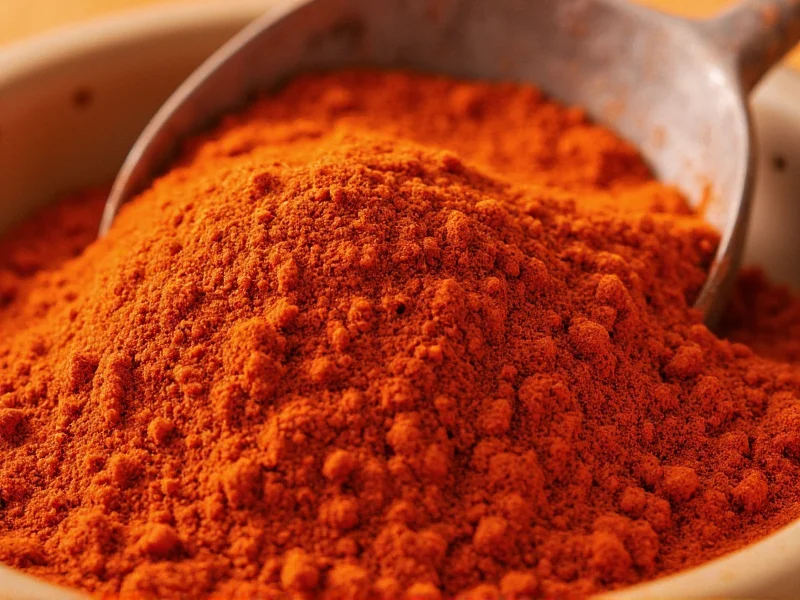Understanding Paprika Substitutes
When your recipe calls for paprika but you're out of stock or need to accommodate dietary restrictions, knowing effective alternatives becomes essential. Paprika serves multiple culinary purposes: adding vibrant red color, providing mild sweetness, or delivering smoky depth depending on the variety. Understanding these distinct roles helps select the most appropriate substitute for your specific cooking needs.
Why You Might Need a Paprika Alternative
Cooks seek paprika alternatives for various legitimate reasons. Some have paprika allergies or sensitivities to nightshade vegetables. Others live in regions where authentic paprika is difficult to source. Professional chefs sometimes need alternatives when developing recipes for international markets with different spice availability. Additionally, certain dietary protocols restrict paprika consumption, requiring suitable replacements that maintain dish integrity.
Detailed Paprika Substitutes by Variety
Paprika comes in three primary varieties, each requiring different substitution approaches. Using the wrong alternative can dramatically alter your dish's flavor profile and appearance. The following table outlines precise substitutions for each paprika type:
| Paprika Type | Best Alternative | Substitution Ratio | Flavor Notes | Best For |
|---|---|---|---|---|
| Smoked Paprika | Chipotle powder | 1:1 | Deeper smoke with mild heat | BBQ rubs, stews, roasted vegetables |
| Sweet Paprika | Tomato powder + pinch cumin | 2:1 | Milder, earthy sweetness | Goulash, deviled eggs, salad dressings |
| Hot Paprika | Cayenne pepper | 1:4 | Direct heat without smokiness | Spicy sauces, meat marinades |
| Regular Paprika | Pimento powder | 1:1 | Slightly fruitier profile | General cooking, color enhancement |
Specialized Substitution Techniques
For recipes where paprika's color matters as much as flavor, consider combining alternatives. When replacing smoked paprika in paella, mix equal parts chipotle powder and sweet paprika alternative to maintain both color and complex flavor. For Hungarian goulash requiring authentic flavor, use a combination of tomato powder, garlic powder, and a tiny pinch of cayenne to approximate traditional sweet Hungarian paprika.
Chefs developing paprika alternatives for commercial products often use annatto for color without the pepper flavor. Home cooks can achieve similar results by steeping a few annatto seeds in warm oil, then straining before use. This technique works particularly well for dishes where paprika primarily contributes color rather than flavor.
Common Substitution Mistakes to Avoid
Many home cooks make critical errors when substituting paprika. Using straight cayenne as a 1:1 replacement for hot paprika creates excessive heat that overwhelms other flavors. Similarly, substituting regular chili powder for sweet paprika introduces unwanted cumin and oregano notes that alter the dish's character.
When replacing paprika in delicate sauces or mayonnaise-based recipes, always add alternatives gradually. The fat content in these preparations intensifies spice perception, requiring less substitute than dry rub applications. For best results, mix your alternative spice with a small amount of liquid from your recipe first to create a smooth paste before incorporating into the main dish.
Testing Your Paprika Alternatives
Professional chefs recommend testing substitutions in small batches before committing to full recipes. Create a simple base sauce or broth, then divide it into portions for testing different alternatives. This method allows direct comparison of how each substitute affects both flavor and appearance. Remember that some alternatives like chipotle powder deepen in flavor as dishes simmer, while others like tomato powder integrate more quickly.
When developing paprika alternatives for people with nightshade allergies, consider using roasted red pepper powder. This substitute provides similar color and mild sweetness without triggering common paprika sensitivities. Roast bell peppers until deeply caramelized, then dehydrate and grind to create a versatile alternative that works well in most applications calling for sweet paprika.











 浙公网安备
33010002000092号
浙公网安备
33010002000092号 浙B2-20120091-4
浙B2-20120091-4